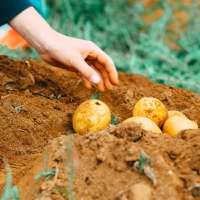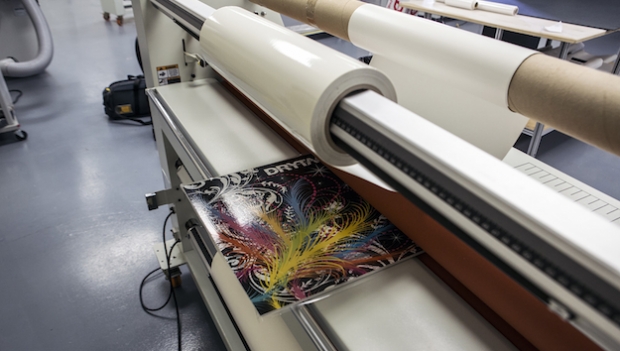


Scientists have created a super pangenome that captures the complete genetic diversity across multiple potato species to identify genetic traits that can help improve its resilience and nutritional quality. The researchers analyzed data from public data banks, including gene banks in Canada, the US and Peru.
The pangenome includes genome sequences of 296 varieties of potatoes and wild versions of 60 species. The researchers note this is the “most extensive collection of genome sequence data for the potato and its relatives to date.”
“By compiling this data representing the vast genetic variation of potato and its wild relatives, we are hoping to inform work to improve potato germplasm for climate-resilience and for safeguarding food security,” author Martina Strömvik, Ph.D. and associate professor at McGill University, Canada, tells Food Ingredients First.
“To improve the modern-day potato, we would identify genetic traits that would make it more resilient to stresses such as heat, drought and cold snaps, which are increasing in frequency with climate change, as well as genetic traits to combat diseases and pests that take advantage of weakened crops and lead to crop losses.”
Potato (Solanum tuberosum L.) is the third most important and most significant non-cereal crop for food security worldwide. The highest diversity of wild species of the genus is found in the mountains of central Mexico and the Andes.
Super spud
The researchers highlight that the super pangenome could help identify specific genes to create a “super spud” through traditional breeding or gene editing technology.
The researchers built the potato super pangenome on 60 out of roughly 110 potato species.“Potato has been selected for beneficial traits and occasionally crossed with wild species since its domestication 10,000 years ago,” adds Strömvik.
“With the amount of sequence data now available and with the type of computational sequence analyses we can do, potato improvement approaches using wild species can be more targeted to genetic information we find in wild species.”
The analysis of gene variations in cultivated and wild varieties indicated that “domestication was associated with changes in photosynthesis, defense response and metabolic processes,” note the researchers.
Moreover, species differed in biological functions related to root development and dormancy.
“Wild potato species can teach us a lot about what genetic traits are critical in adapting to climate change and extreme weather, enhancing nutritional quality and improving food security,” underscores Strömvik.
Genetic variation
Most modern potato varieties are tetraploid (having four copies of their genome), while most wild potato species are diploid (having two copies of their genome, like humans), explains Strömvik.
She further reveals that the genetic diversity in modern potatoes is suboptimal, as they are typically propagated to keep desired properties. However, wild species are “free to roam and cross-pollinate at will and therefore have a much larger genetic diversity. It is this diversity that may hold the important traits we need.”
“The strength of this study is that because we look at which genes are present or absent in each of the genomes by comparing to the collection of all the genes in all the genomes (the super pangenome), we were able to place tetraploids and diploids in a phylogenetic tree in a relatively simple way.”
“By doing this, we can see what genetic traits are typical for different branches of the tree and even which species have which genes compared with the others. That can inform us of where to look for genetic variants.”
Wild potatoes have a much larger genetic diversity than cultivated crops.To distinguish genetic variations, the researchers grouped the different potato varieties into four clades (natural groups). For example, one group had unique genes for functions in flower development and developing tubers. The authors also found genes unique to three groups with processes associated with stress responses, such as cold.
Moreover, the authors suggest that transposable elements – mobile DNA sequences that can replicate within genomes independently of the host cell DNA – play a role in adaptation to new environments.
These elements are an essential source of genetic variability. Their content differed among the various clades. For example, clades isolated from other species had a much lower range of transposable elements.
Learning from wild potatoes
The researchers underscore that the super pangenome can be used to answer questions about the evolution of the potato, which Indigenous peoples in south Peru domesticated.
“Having multiple copies of their genome is natural to plants, and it is thought that probably all flowering plants have at one point been polyploid,” explains Strömvik. “Polyploid plants are typically larger than their diploid counterparts, and humans have selected these because they have larger fruits, or in the case of potato, larger tubers.”
In addition, she underscores that most, if not all, wild potatoes are not edible because they produce high levels of toxic glycoalkaloids. The modern-day potato has been selected to produce very low amounts that are not harmful to humans.
Wild potato species can teach a lot about critical genetic traits to adapt the species and increase quality.Although the study, published in PNAS, includes the largest number of potato species in a pangenome, with 60 out of roughly 110 potato species, Strömvik explains that the available data limit the research.
“Each species has within itself important genetic variation, and I hope to someday see 1,000 genomes from each of the 110 potato species, kind of like the 1,000 genomes project for humans, only for 100 or so more species.”
Gene-editing crops
Mapping out crops’ genomes helps accelerate plant breeding programs and develop varieties with higher quality or resistance to diseases or climate change.
Researchers mapped the peanut genome to create resistant nuts that boost yields, aiming to develop new breeding tools and improve quality traits such as nutrition and flavor.
This research has resulted in a new peanut variety resistant to late-leaf spot disease, a significant threat to peanut crops.
Moreover, in the UK, wheat trials of a gene-edited variety found a reduction of a potential carcinogen when the flour was baked.







